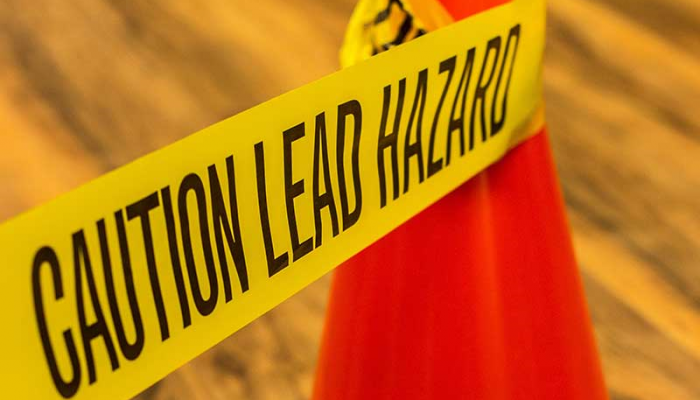What is HIV?
Human Immunodeficiency Virus, commonly known as HIV, is a virus that weakens your body’s immune system. HIV is a chronic illness, as there is no cure, but with proper treatment and care, people living with HIV can live long, healthy lives. If left untreated, HIV can progress to acquired immunodeficiency syndrome, commonly known as AIDS.
What is AIDS?
AIDS is the third stage of HIV infection. People diagnosed with AIDS have severely damaged immune systems and have difficulty preventing opportunistic infections.
Opportunistic infections are illnesses that occur among people with damaged immune systems. Some examples include:
- Kaposi’s Sarcoma
- Candidiasis
- Cytomegalovirus
- Toxoplasmosis
An AIDS diagnosis is determined by the following:
- An individual develops certain opportunistic infections, like the ones mentioned above.
- The total amount of CD4 cells, a type of white blood cell that fights infections, in the body drops below 200 cells per milliliter of blood.
How is HIV transmitted?
It’s important to know that people living with HIV cannot transmit HIV to others if they take their medicine as prescribed and become undetectable. This means that the level of HIV is so low that a blood test can’t measure it.
HIV can be transmitted through sex or syringe sharing, and during pregnancy, childbirth, and nursing (breastfeeding).
Person-to-Person:
- Anal sex
- Either partner can get HIV during anal sex.
- During anal sex, a receptive partner (bottom or having your partner’s penis inside your rectum (butthole)) makes you more likely to get HIV than being the top (putting your penis inside your partner’s rectum).
- Bottoms are more vulnerable because the rectum lining is fragile, making it easy for HIV to enter the body during anal sex.
- Tops can acquire HIV as it can enter the body through the opening of the tip of the penis (urethra), the foreskin, or cuts or sores on the penis.
- Vaginal sex
- Either partner can get HIV during vaginal sex.
- The vagina and cervix have delicate tissue, making it easy for HIV to enter the body.
- Vaginal fluid and blood can carry HIV, which can enter through the opening of the tip of the penis (urethra). These fluids can also enter the body through any minor cuts, scratches, or open sores on the penis.
- Pregnancy, Birth, & Breastfeeding
- HIV can be passed to a baby during pregnancy, childbirth, and breastfeeding. This is called perinatal transmission.
- This is the most common way for children to acquire HIV
- If a pregnant person living with HIV takes their medication as prescribed during pregnancy and childbirth, gives HIV medicine to their baby for 4-6 weeks after birth, the chance of their baby acquiring HIV is less than 1%.
- Injection Drug Use
- When syringes, needles, or other injection equipment are shared, they can have someone else’s blood on them and carry HIV.
- Sharing injection syringes, needles, and other injection equipment increases your chances of acquiring other infections like hepatitis B and hepatitis C.
- People who inject drugs may be more likely to engage in sexual behaviors that increase their chances of getting HIV.
HIV treatment reduces the chances of transmission to others through sex or syringe sharing, and during pregnancy, childbirth, and nursing (breastfeeding).
Bodily Fluid Transmission:
- Blood
- Semen (Cum)
- Pre-seminal fluid (Pre-cum)
- Rectal fluids
- Vaginal fluids
- Human milk
These fluids must encounter damaged tissue or a mucous membrane for HIV transmission to occur.
The skin tissue on areas of the body, such as the rectum, vagina, penis, or mouth, is known as Mucous membranes.
How is HIV not transmitted?
HIV cannot survive or reproduce outside the human body. The following are ways that HIV cannot be transmitted:
- Insects
- Saliva, tears, or sweat
- Hugging, touching, or shaking hands
- Through the air
- Sharing dishes or toilets
- Closed-mouth kissing
- Sexual activities that don’t exchange bodily fluids (touching)
How can I prevent HIV?
One of the most important things you can do to prevent HIV is to know your status. Getting an HIV test can open the doors to exploring your options for preventing HIV.
There are options for both people living with HIV and people who are HIV negative.
For people who are HIV negative:
- Using Condoms
- Taking medications to prevent HIV, known as Preexposure prophylaxis or PrEP
- Taking medication after a potential HIV exposure, known as PEP
For people living with HIV:
How do I know if I have an HIV infection?
The only way to be sure if you have an HIV infection is to get tested. Knowing your HIV status is crucial to protecting your health and the health of others. If you have HIV, taking HIV medicine as prescribed, becoming and staying virally suppressed (undetectable) will allow you to live a long, healthy life, and not transmit HIV to your sexual partners. If your test is negative, you can take actions to prevent HIV.
Testing
There are many options for quick, free, and painless HIV testing.
- Everyone between the ages of 13 and 64 should get tested for HIV at least once.
- People with certain risk factors should get tested more often.
- Most HIV tests are available for free or at a reduced cost.
- Visit gettested.cdc.gov to find HIV testing in your area.
It is essential to get tested for HIV. You can get a test at your primary care provider or at one of the many HIV testing sites across Philadelphia. You can also get tested in the comfort of your home by ordering a self-test kit.
Symptoms
Some people who experience an HIV infection may not have any symptoms. However, most people experience flu-like symptoms within 2 to 4 weeks after their initial infection. Symptoms to be aware of are:
- Sore throat
- Fever
- Swollen lymph nodes
- Rash
- Fatigue
- Chills
- Mouth ulcers
- Night sweats
Stages of HIV infection
If an HIV infection is left untreated, it will progress through the following three stages:
Stage 1: Acute HIV Infection
- There is a large amount of HIV in your blood, and the chance of HIV transmission is very high
- Most people experience flu-like symptoms.
Stage 2: Chronic HIV Infection
- This stage may also be referred to as “asymptomatic HIV infection.”
- HIV is still active and continues to replicate in the body.
- People may not show symptoms or even get sick, but the chance of HIV transmission is very high
- With HIV treatment, progressing to stage three can be prevented
Stage 3: Acquired Immunodeficiency Syndrome (AIDS)
- The last stage of HIV infection
- People diagnosed with AIDS have severely weakened immune systems and will experience acquiring opportunistic infections more often than people with strong immune systems.
HIV life
HIV goes through different stages as it affects the body. Understanding the HIV life cycle helps scientists develop medicines to control the virus. These medicines, called antiretroviral therapy (ART), target different stages of the life cycle. By blocking HIV from developing further, ART can slow down the virus and help people with HIV stay healthy.
Attachment
When HIV enters the body, it finds the body’s immune system cells called CD4 cells. It attaches to these cells using specific receptors on their surface.
Fusion
After attaching, HIV combines with the CD4 cell, entering inside. This allows the virus to transfer its genetic material into the cell.
Reverse transcription
Once inside the CD4 cell, HIV changes its genetic material from RNA to DNA using a special enzyme called reverse transcriptase.
Integration
The HIV DNA becomes a part of the CD4 cell’s genetic material. It can stay inactive or become active later.
Replication
When the virus becomes active, it tells the CD4 cell to make more copies of the virus. The cell produces new HIV RNA and proteins.
Assembly
The new viral components come together to form new HIV particles inside the CD4 cell.
Budding
These particles then leave the cell, taking a part of the cell’s outer membrane with them.




